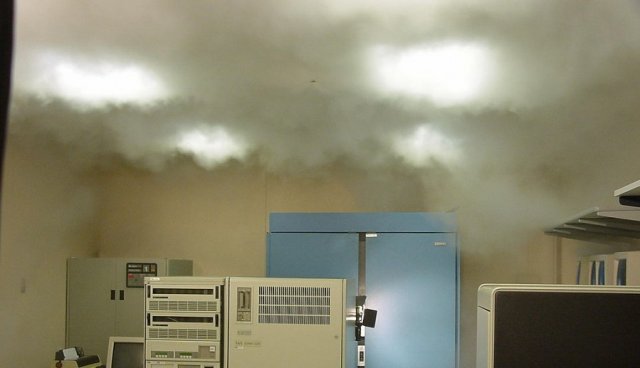
It all began when the monitors started bursting into flames. Well, at least that’s when I knew I had walked into a tech support horror story.
Back in the day when the cathode-ray tube was still the display of choice and SVGA really was super, I was working as a network engineer and tech support manager for a government contractor at a large military research lab. I spent two years on the job, and I learned in the process that Murphy was an optimist. The experience would provide me with enough tech horror stories and tales of narrow escape through the most kludged of hardware and software hacks ever conceived to last a lifetime—and to know that I would much rather be a writer than work in tech support ever again.
Of course, all of us have tech horror stories to tell, especially those of us who were “early adopters” before the term was de rigueur. So we’re looking for you, our readers, to share yours. The most bone-chilling and entertaining of which we’ll publish tomorrow in honor of Halloween—that day each year when some people change their Twitter handles to pseudo-spooky puns, and others just buy bags of candy to have ready for the traditional wave of costumed home invaders.
To get your narrative wheels turning and set the mood appropriately, I’ll kick things off with my tales of tech support that I save for the darkest power outages and most wicked of LAN storms.
The fall of the house of Zenith
Back in the late 1980s, the US military bought a giant heaping load of computers under what was called the Desktop II contract—not from IBM, Dell, Compaq, or Hewlett-Packard, but from Zenith Data Systems. The Zenith Z248 was purchased in such quantity that, rumor has it, some were used for sandbags during Desert Storm.
I arrived as a support contractor just as the Department of Defense was starting another big PC buy—386-based PCs from Unisys, under the Desktop III contract. But while the PCs themselves were getting upgraded, in many cases the old ZDS monitors were remaining. This was in part because the lab I was working at had standardized on MS-DOS 5.1 and was going nowhere near Windows 3.11.
I got a lock on the job during my interview, when the DOD point-of-contact said that none of the computers that had been installed recently could get on the network. There was some head-scratching over it, since all the software seemed to be in place, and everything looked good at boot-up. But it took me about five minutes to realize that they had copied the same configuration to every machine—including the IP address. So I spent my first official day on the job using DOS EDIT to change the IP address on a fleet of PCs.
Not too long into the project, I was interrupted by a fire alarm. In the next nest of cubicles, a monitor had suddenly burst into flame. In quick succession, over the next few hours, three more monitors would spontaneously go up in smoke on the floor.
All of the monitors that had combusted were Zenith monitors. As it turns out, this was no strange electronic denial of service attack or the work of a fire-starting poltergeist. The monitors, which were usually turned on and left on for days, were all from the same batch. And the flyback converters in all of them were coated in epoxy—epoxy that had aged and cracked over time before becoming ticking time fire-bombs that all started going off at once.
That wouldn’t be the worst of it, however. A few months later, I was just stepping away from a wiring closet when there was an enormous boom of lightning and the lights flickered. I could smell something burning, and I ran to the raised-floor server room.
Lightning had struck. But there wasn’t a power surge—instead, the lightning had actually hit an Ethernet coaxial line stretched on poles to a trailer outside the building and traveled back into the server room. It had fried a whole rack of network switches and the network interfaces on multiple minicomputers. Fortunately, the twisted pair wiring had been isolated, but it meant repeating a week’s worth of wire-pulling and buying hundreds of thousands of dollars worth of new switches—not to mention major repairs on an HP 3000.
I was working through the parts list for our order to Cabletron when my monitor went up in smoke.
So now it’s your turn: tell us your own personal tale of technology gone wrong in the comments or tweet them to me with the hashtag #ITTalesOfTerror. I look forward to cowering behind my server rack.
reader comments
214